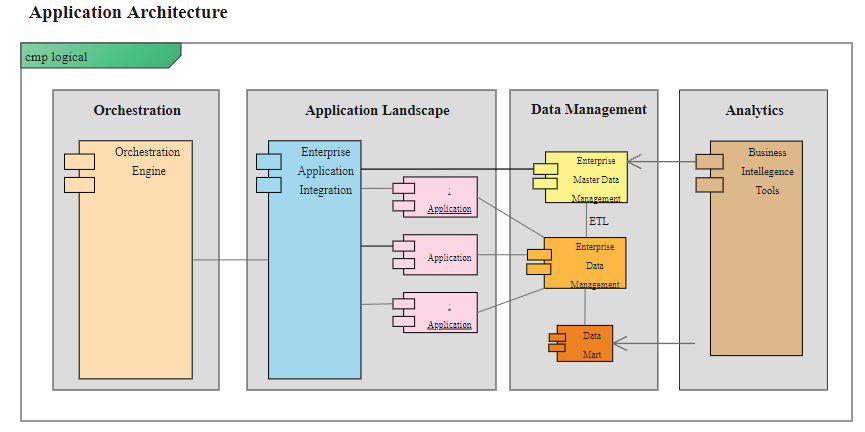
Demystifying Application Architecture: Building the Backbone of Your Digital World
Mufaddal Khandwala
Enterprise Architect | Expertise in Digital Transformation, Workplace, Security, Cloud and Infrastructure | Building Customer-Centric Solutions
As a seasoned enterprise architect, I've witnessed the ever-growing importance of application architecture. It's the blueprint for your organization's software landscape, ensuring applications work together seamlessly and support your business goals. So, let's delve into what it is and how we model it effectively!
What is Application Architecture?
Imagine application architecture as the underlying structure of your software ecosystem. It defines the relationships, interactions, and dependencies between your applications. Think of it as the organized network of roads and bridges connecting different parts of your digital city.
Why is it Important?
Without a robust application architecture, your software landscape can become a chaotic maze of disconnected applications, leading to:
Modeling the Application Architecture: Building Your Digital Blueprint
Ready to create a cohesive application landscape? Here's a simplified guide:
领英推荐
Choosing the Right Tool:
Consider your specific needs, complexity of your landscape, and team's technical expertise. There's a tool for every project!
Remember: Application architecture is an evolving entity, not a static document. Continuously monitor, evaluate, and adapt your architecture to keep pace with changing business needs and technological advancements.
By investing in a well-defined application architecture, you'll empower your organization to deliver innovative solutions, enhance agility, and achieve sustainable success. And hey, if you have any questions, your friendly neighborhood enterprise architect is always happy to help!
#enterprisearchitecture #applicationarchitecture
Head of HR Operations & Compliance [email protected]
1 年Enterprise Information Architect required for Saudi Arabia send cv [email protected]
Head of HR Operations & Compliance [email protected]
1 年Sr.Data Engineer Expert Required for Saudi Arabia send cv [email protected]